Are you new to embroidery and have plenty of machine embroidery questions in mind? Don’t worry; you’re not alone! Many beginners have similar concerns, from choosing the right machine and supplies to understanding techniques and troubleshooting. In this article, we’ll go over some of the most common beginner embroidery machine questions & answers to help you start your embroidery journey with confidence.
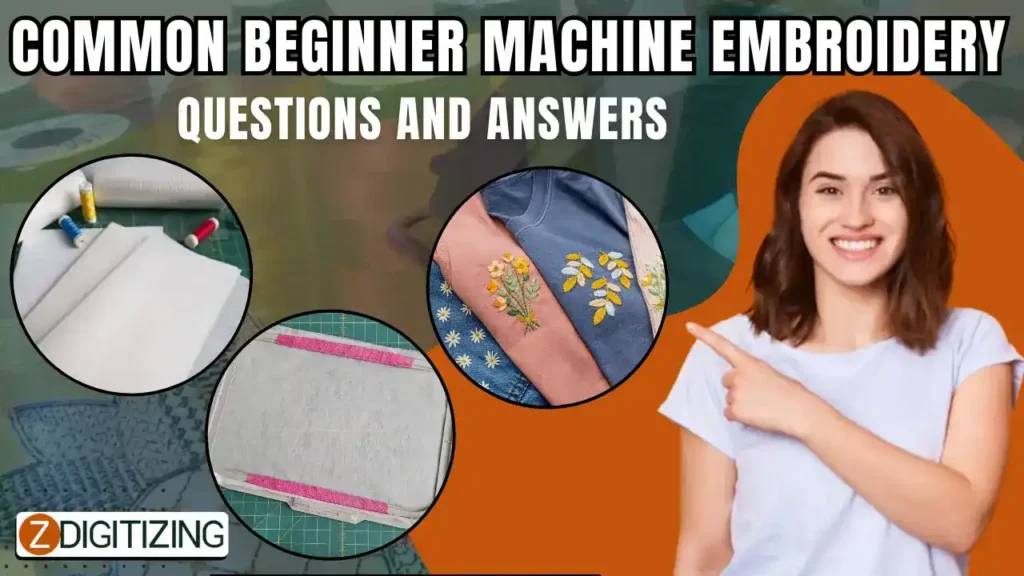
Whether you’re wondering which stabilizer to use or how to transfer designs, we’ve got you covered with easy explanations. Let’s dive into these FAQs to get you started on the right path!
Common Beginner Machine Embroidery Questions and Answers
1. Is a stabilizer necessary, and which one should I use?
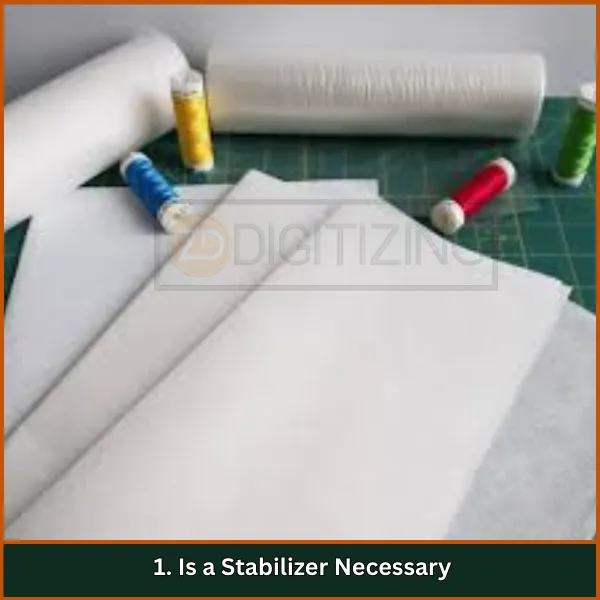
Yes, you definitely need a stabilizer, but the type you should use depends on several factors like the fabric you’re using, the complexity of your design, and how often the embroidered item will be worn or used.
For instance, if you’re embroidering on t-shirts or caps—items that you wear often—you’ll want a permanent stabilizer to help your design last longer. For durable fabrics like those used in tote bags or placemats, a tear-away stabilizer works best.
For items like towels, a water-soluble stabilizer is ideal because it prevents any damage to the embroidery when the stabilizer is removed.
2. How can I transfer an embroidery design to my machine?
The method of transferring an embroidery design depends on the type of machine you have. Some machines have a USB port which makes it easy to transfer designs via a USB stick.
Others might have Bluetooth capabilities, allowing you to transfer designs wirelessly. However, remember that designs are often bought in a compressed format, so make sure to decompress or unzip them before transferring.
Embroidery Digitizing & Vector Art Services
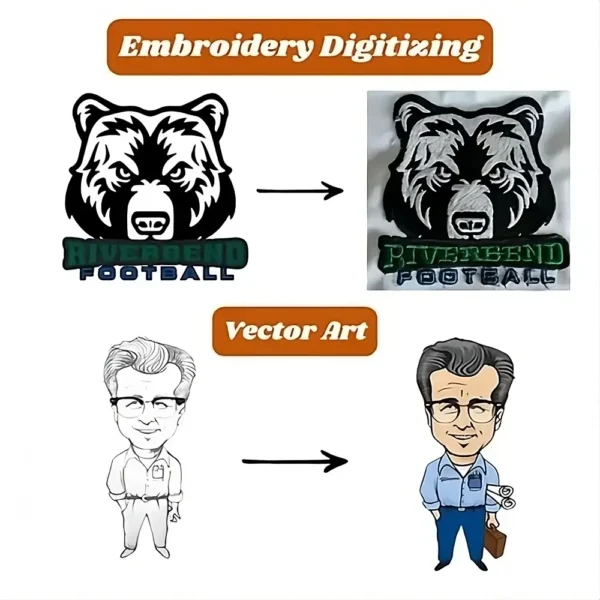
Looking for embroidery digitizing and vector art services that are affordable and reliable? We offer fast turnaround time, guaranteed quality, and the option to preview your design before payment, we make sure you get exactly what you need. Your satisfaction is our top priority, and we’re dedicated to delivering the best results. Don’t wait—try ZDigitizing today and see the difference in quality and service!
Embroidery Digitizing & Vector Art Services
Looking for embroidery digitizing and vector art services that are affordable and reliable? We offer fast turnaround time, guaranteed quality, and the option to preview your design before payment, we make sure you get exactly what you need. Your satisfaction is our top priority, and we’re dedicated to delivering the best results. Don’t wait—try ZDigitizing today and see the difference in quality and service!
3. What steps do I follow to set up my embroidery machine?
Setting up an embroidery machine varies depending on whether it’s a normal embroidery machine or a combination machine (sewing and embroidery). For an embroidery-only machine, the setup is fairly straightforward.
First, attach the main part of the machine and then attach the hoop. Unlock the machine’s arm, attach the hoop, lock it back, and you’re ready to go. For a combination machine, attach the embroidery module to the main body, which resembles a regular sewing machine. You can also watch YouTube videos for a clearer step-by-step guide.
4. Where can I find embroidery files to stitch out on my embroidery machine?
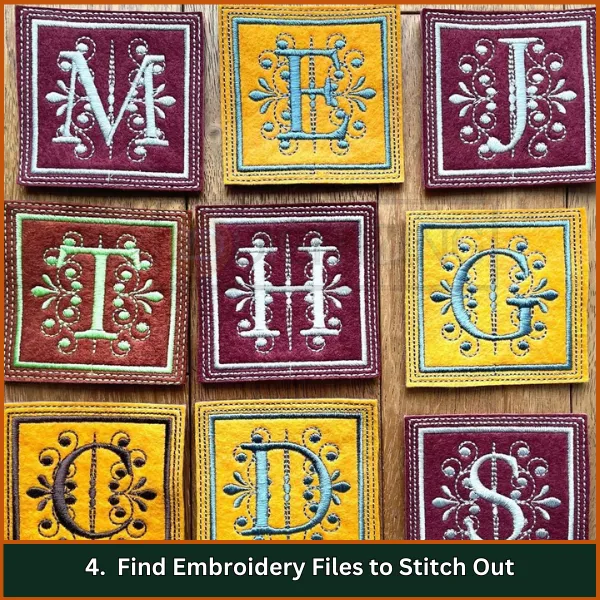
There are many online stores where you can browse and buy embroidery designs, like Etsy and others. However, if you’re short on time or find designs from different stores to be expensive, you can visit our store.
We offer a variety of designs at competitive prices with great after-embroidery results. If you’re new to embroidery, we suggest starting with designs sized for a 4″x4″ hoop, which is a common size available with most machines. So you won’t need to buy a different hoop size unless you choose a different design size.
5. What’s the best way to attach my fabric to the hoop?
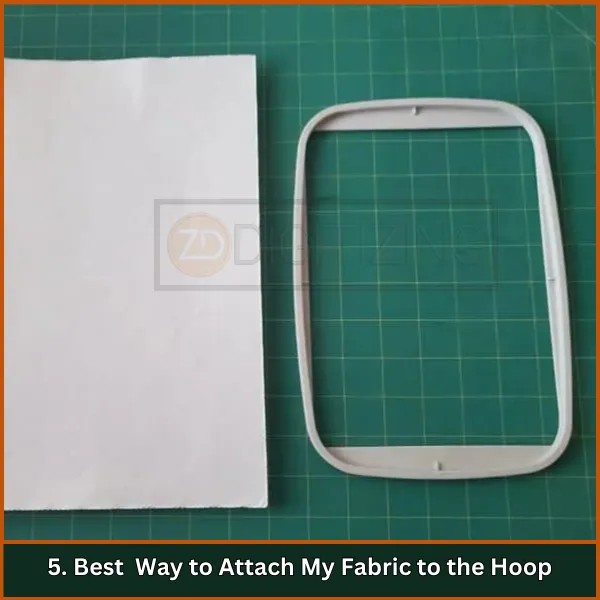
There are two main methods: hooping and floating. The method you choose depends on the type of fabric. Hooping is when you secure your fabric tightly in the embroidery hoop to keep it from moving during embroidery.
However, not all fabrics can be hooped effectively, like thicker or more delicate materials. For these, the floating method is recommended.
Where you can use either tear-away or water-soluble stabilizers depending on your specific needs. This method helps to manage fabrics that are difficult to hoop directly.
6. How do I determine the right colors for a design, and when should I change them?
When we receive digitized files from digitizers, they often suggest thread colors within the file. It’s not mandatory to use these suggested colors—you can choose your own to express your creativity.
However, for complex designs, we recommend sticking with the digitizer’s choices because they are experienced and know which colors best fit each part of the design.
Some machines automatically change thread colors; in such cases, you should communicate your color preferences to the digitizer to ensure they incorporate them. If you’re using a single needle machine, you have the flexibility to adjust and choose your favorite colors as you work.
7. What embroidery file formats are compatible with my machine?
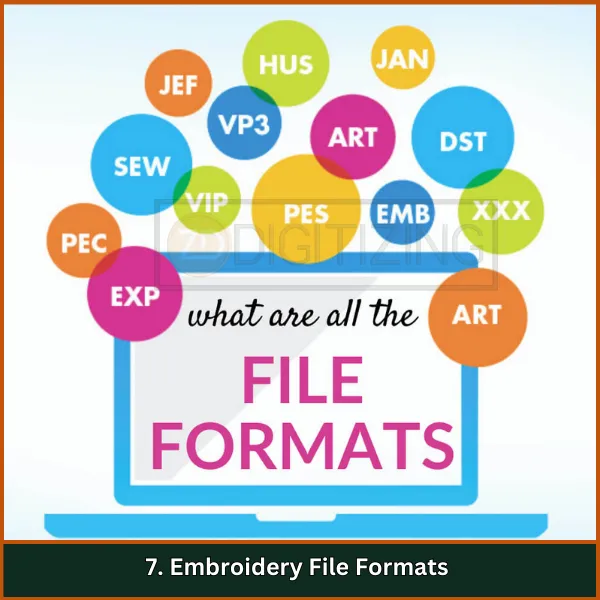
There isn’t a specific file format that works with every machine; it really depends on the model you have. We recommend consulting the user manual that comes with your machine or asking the seller about which formats your machine can accept.
If you’re unsure, it’s a good idea to buy designs available in multiple formats. This way, when you load the design into your machine, it will automatically pick the format it can use.
8. What extra tools and accessories are essential besides the embroidery machine?
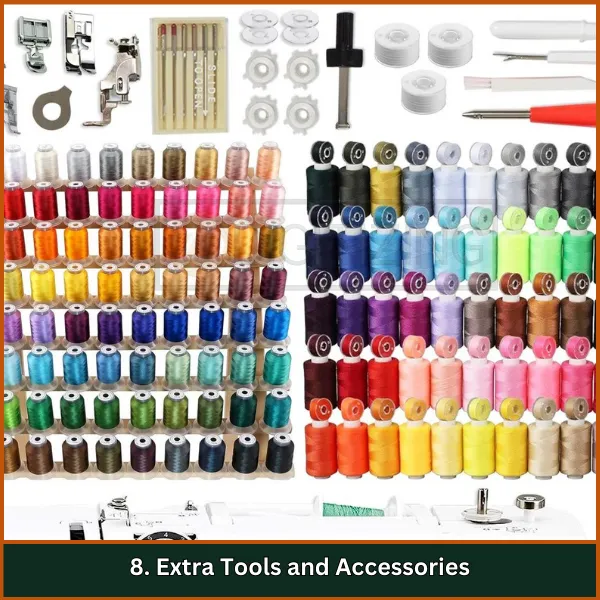
The good news is that most machines come with a set of accessories needed for embroidery. However, you might need a few extra things to make your embroidery work smoother.
We suggest having scissors, thread spools, thread nets, stabilizers (as we mentioned before, they are very important), rulers, disappearing ink pens, and embroidery nippers for cutting threads close to the fabric.
9. How can I ensure my design isn’t crooked when positioning the fabric in the hoop?
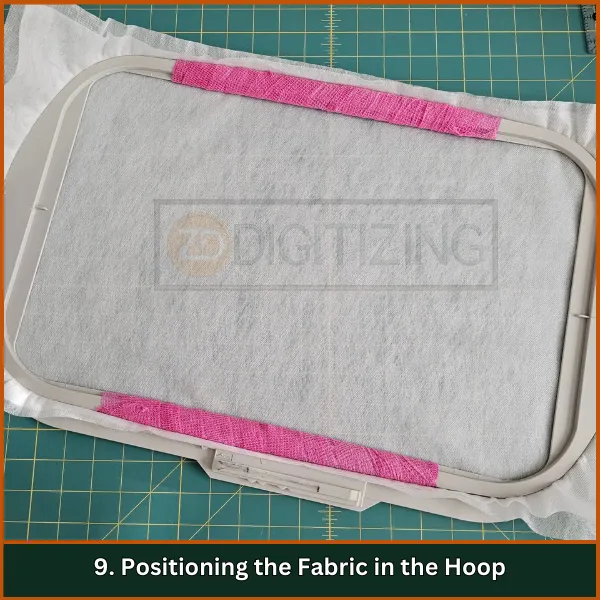
There are a couple of ways to make sure your design is positioned correctly. Before you hoop, you can use a ruler to mark the center point on your fabric. When you place the fabric in the hoop, make sure that this mark is at the center of the hoop.
Another method is the folding method, where you fold the fabric to find the center and mark it. Also, there are positioning kits available in the market that can help ensure your design is perfectly aligned.
10. Is it possible to use an embroidery machine for regular sewing tasks?
This is a common question among beginners. The answer is both yes and no.
A simple embroidery machine cannot be used for regular sewing, just like a regular sewing machine cannot perform embroidery tasks unless it’s a combo machine designed for both sewing and embroidery.
Another method by which embroidery machines function like sewing machines is through creating “in-the-hoop” projects.
These projects are crafted entirely within the embroidery hoop, utilizing multiple layers of stitching to connect different pieces of fabric, ultimately forming a complete item.
Embroidery Digitizing & Vector Art Services

Looking for embroidery digitizing and vector art services that are affordable and reliable? We offer fast turnaround time, guaranteed quality, and the option to preview your design before payment, we make sure you get exactly what you need. Your satisfaction is our top priority, and we’re dedicated to delivering the best results. Don’t wait—try ZDigitizing today and see the difference in quality and service!
Embroidery Digitizing & Vector Art Services
Looking for embroidery digitizing and vector art services that are affordable and reliable? We offer fast turnaround time, guaranteed quality, and the option to preview your design before payment, we make sure you get exactly what you need. Your satisfaction is our top priority, and we’re dedicated to delivering the best results. Don’t wait—try ZDigitizing today and see the difference in quality and service!
Wrap Up
We’ve answered many machine embroidery questions, but if you feel something is missing, please add it in the comment section. We’ll respond as soon as possible, and if there are many important embroidery machine questions, we might even write another article.
To do embroidery, you’ll need a digital file, and that’s where we can help. We can digitize your designs at the best prices, no matter how complex they are. Plus, we have a special offer for you—if it’s your first time ordering, you’ll get 50% off your first order.
So, don’t wait—place your order now and take the first step in growing your embroidery business. Thank you for taking the time to read this article. Please share your experiences with embroidery machines with us.
FAQs
Machine embroidery is the process of using a computerized sewing machine to create patterns and designs on fabric. It’s a quick and precise way to add detailed designs to various textiles.
Yes, special software is needed to create or modify designs in a format that embroidery machines can read, like DST or PES files. This software allows you to customize and prepare your designs for stitching.
Not all designs are suitable for machine embroidery. The design needs to be in an embroidery-compatible format and must be digitized, meaning it is specifically prepared for stitching by the machine.
You’ll need an embroidery machine, which is specifically designed to stitch designs onto fabric. These machines range from basic models for home use to advanced ones with multiple needles for professional use.












